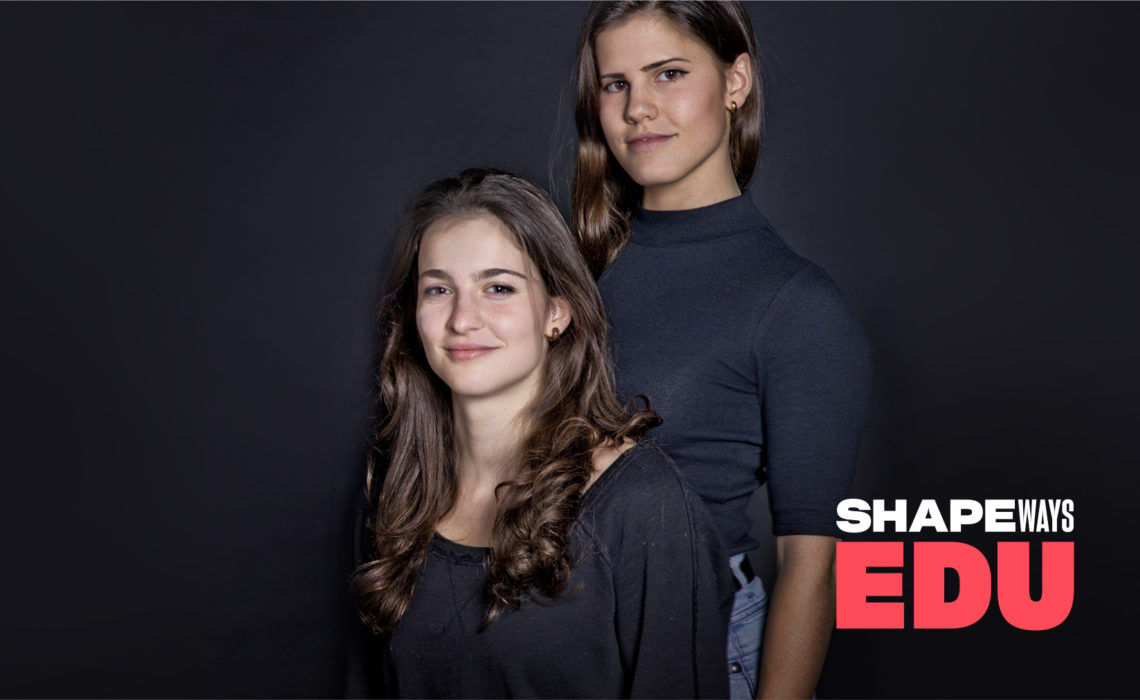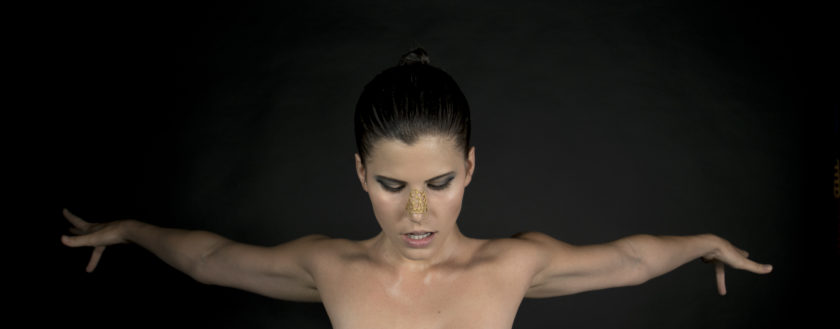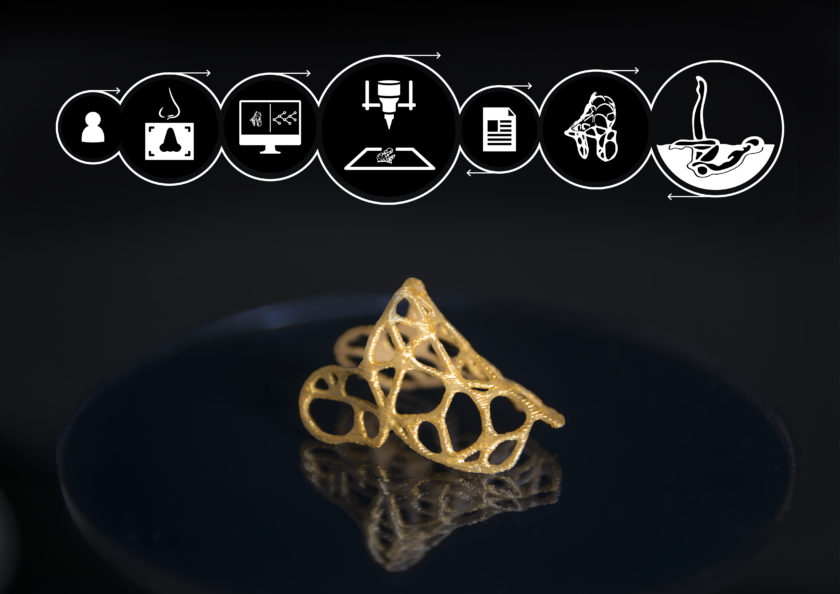
With the help of Shapeways, student designers Maria Carrion and Núria Diago were able to take their project, Be (in the) Water, to the next level.
“Thanks to the EDU grant [from Shapeways] and the versatility of additive manufacturing, we found a way to explore within different materials to find the best option in the quickest and cheapest way,” the Barcelona-based 3D designers said.
As Carrion and Diago finish up their six-year studies at Eslisava University, Barcelona’s School of Design and Engineering, they’ve begun to transform their idea of upgraded nose swimming clips into a reality.
A deep dive into 3D printing

“Be (in the) Water started as a goal to redesign and upgrade the current nose swimming clips for synchronized swimming that one can find in the market and that is used by every person that practices this sport, being a beginner or an elite athlete. It is a nose swimming clip based on a generative design structure which has been specifically adapted to the nose surface of each user, regulating the relationship between the body and its surroundings playing the role of a second skin.”
3D design and printing are at the heart of Be (in the) Water. For starters, Carrion and Diago use 3D design software to scan each user’s nose, creating a personalized product. From there, once the clip has been designed virtually, 3D printing is used to make it into a fully functional product.

Nose scanning combined with 3D printing allows each piece to be custom designed
“We see [3D printing as] a tool that will change the way designers understand design as well as upgrading the products that one can find in the market. 3D printing is something that came so fast and it is changing every day, that is why we have had to discover and get into it by ourselves, reading, going to conferences, events, meeting people who are involved in the topic and finding our own way in this ever bigger new field. The piece couldn’t have been developed with traditional manufacturing processes as none of them could ever get such a delicate, precise and tricky structure,” they told Shapeways.
Searching for the perfect materials
Through Shapeways, Carrion and Diago were presented with a large array of materials to choose from. And while this was certainly an advantage when it came designing, it also presented some challenges for the young creators.
“Our main challenge has been to find the right material as there are lots of constraints for a piece that has to be in contact with chlorinated water and at the same time has to allow skin contact. It also needs a specific stiffness, but also some flexibility. But sincerely, the large amount of options we found thanks to the Shapeways material library and their clear explanation of every one of them helped a lot.”
With the many material options provided through Shapeways, Carrion and Diago have been able to continuously try out new versions of their product, aiding in the already tricky trial-and-error process.

Be (in the) Water product workflow
“For the material selection, we used different materials aiming to see their strengths and weaknesses, like elastomer plastic,” they said. “That’s why we used flexible materials although we knew that it was not adequate in terms of structure for a nose clip, but using them we got inspired to find other possibilities like combinations of more than one materials. We also tested metallic and plastic materials available in Shapeways with which the nose clip becomes totally functional with a professional finishing. Now we are testing the materials on the context and polyamide is so far the material that better fulfills the technical requirements such as a good relationship between flexibility and rigidity, skin adherence, impact resistance and recyclability.”
Looking ahead
And now, as Carrion and Diago prepare to graduate next year and enter the workforce, the success of their student project has given them the confidence needed to blaze forward. When asked about whether they envision turning Be (in the) Water into a business, they said, “We believe in the future of the project, and after some market studies we know that there is a gap which can be filled with this functional and aesthetic nose clip. It would be a dream come true to see Be (in the) Water available for all synchronized swimmers who appreciate our product.”
They added, “Trust in the possibilities of 3D printing because it can be a source of inspiration by itself.”
Are you a student or a teacher?
You may be eligible for a 15% discount through our EDU program. Learn more.


